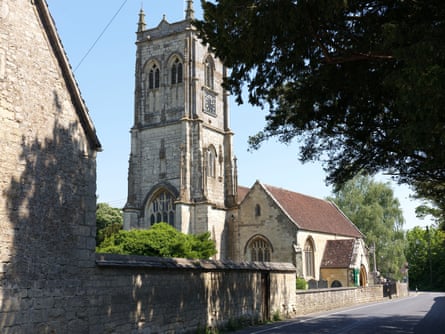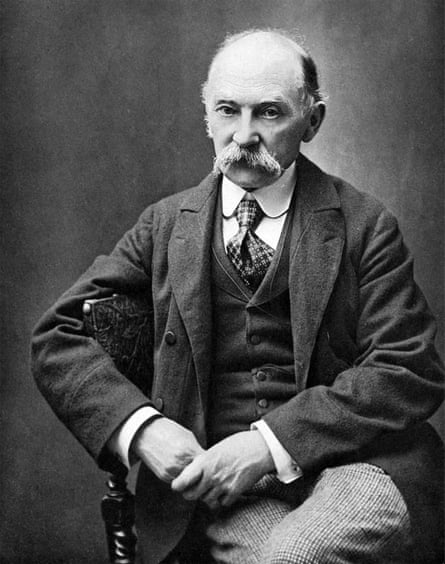Thomas Hardy described his fictional village of Marlott as being in an “engirdled and secluded region, for the most part untrodden as yet by tourist or landscape-painter, though within a four hours’ journey from London”.
But the Victorian realist would now barely recognise Marnhull, the real-life village in Dorset upon which Marlott was based, and would likely be surprised to know his name is repeatedly invoked in official submissions arguing against its ongoing expansion.
Nestled in the Blackmore Vale, the opening backdrop for Hardy’s Tess of the D’Urbervilles, Marnhull is a patchwork of hamlets with a hotchpotch of architectural styles, from Tudor manors and thatched cottages to postwar developments.
In recent months, an acrimonious row has broken out over plans to build up to 120 homes, which residents fear will merely be “phase one” of an ongoing, wider expansion of the picturesque village. The situation has underlined some of the tensions rising out of the Labour government’s drive to build more houses.
Dorset council refused permission for the development in July 2024, but the landowner successfully appealed against this after an inquiry by the national planning inspectorate, which had to take Labour’s new housing requirements into account.
The strength of feeling was so forceful in Marnhull that the parish council took the unusual step of taking part in the inquiry as a “rule 6 party” – an interested group granted the right to actively participate in the inquiry process.

It is striking how many times Hardy is referenced in the parish council’s submissions as evidence of the village’s important heritage status. Stephen Boyce, a Marnhull resident and heritage consultant, submitted 40 pages of argument with dozens of references to the romantic poet and novelist, known for works including Far from the Madding Crowd and Jude the Obscure.
Boyce, who has held senior roles at the National Lottery Heritage Fund and consulted for the National Trust, says: “The development demonstrates no awareness of the important cultural value of the site in question, in particular its associations with the work of Dorset’s most famous literary figure, Thomas Hardy. These historic connections make a notable contribution to the character, significance and quality of Marnhull’s heritage.”
The scheme would also include a commercial plot being developed – provisionally named Tess Square in a nod to the eponymous character of Hardy’s renowned novel – as well as a large car park near St Gregory’s church – where Tess’s baby, Sorrow, was buried.
Boyce says: “The proposed development particularly impinges on the locations and buildings most closely associated with Tess.” He points out that in addition to the church, the Pure Drop Inn in the novel is based on Marnhull’s Crown Inn.
Residents of Butts Close backing on to the field earmarked for development are devastated by the proposals.

Anne Hartley, 59, and her husband, Mike, 61, enjoy an uninterrupted view across the vale from their back garden, which will vanish if and when the development is built.
Anne Hartley says: “You used to be able to walk quite easily down some of the little country roads and the lanes you’ve got here, but now you’re diving into shrubs to get out of the way of cars.
“If you put another 120 houses you’re going to get more and more and more. And you’re going to lose that tranquility that so many people have moved here to get.”
after newsletter promotion
In his decision to allow the appeal, the planning inspector, Jonathan Bore, says that under new requirements introduced by Labour, Dorset council must build 3,219 homes a year – nearly double the 1,739 required under the previous government.
He appears to criticise Dorset council for failing to put in place a policy for housing allocations across the county.
Bore says: “The position is one of very high identified housing need. There is no up-to-date spatial strategy that responds to this position, no up-to-date policy that establishes the amounts of development to be apportioned to different locations in the light of this need, and no prospect that a new local plan will be adopted until 2027.”

Marnhull parish council said it was “surprised and clearly disappointed” by the planning inspectorate decision.
It said in a statement: “We took the unusual step of participating in the inquiry as a rule 6 party as the village was overwhelmingly opposed to what is perceived as a disproportionately large development in a rural village with significant impact on heritage, existing local businesses and highways safety.
“We summarised our case in documents submitted to the inquiry but ultimately our concerns were outweighed by Dorset council’s significant shortfall in building housing to meet the new government targets and by the lack of a current Dorset council development plan.”
A spokesperson for Dorset council said it had agreed a supply of housing before the recent government changes, which is valid until the end of October under transitional arrangements. The council said the increased demands for housing under the new framework, coupled with requirements to mitigate potential pollution from new developments meant it was searching for new sites.
It said: “Dorset council is preparing a new local plan, and consultation will be taking place on site options this summer, taking account of the latest housing and mitigation requirements. In the meantime the council continues to work positively to support the delivery of sustainable development.”

.png) 10 hours ago
5
10 hours ago
5

















































